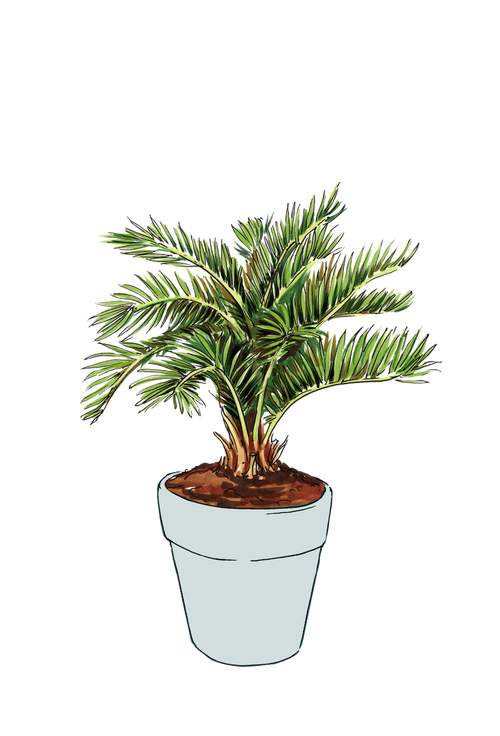Welcome
You have points
Recently viewed
No recently viewed items
Wishlist
Sign in to access your favorites

Grows best in bright, direct light.
Allow the soil to dry out completely between waterings. Enjoys being on the most, but not soggy side.
Enjoys some humidity. Spritz occasionally.
Keep in them in ideal temperatures so that they will remain healthy.
Outside: Keep out of direct light as that will burn the leaves. Keep in part shade or early morning sun (4-6 hours). Nightime temperatures need to remain above 45°F for healthy growth.
Apply a slow release fertilizer especially formulated for indoor plants. Apply once during the spring, summer and fall season. Let rest during the winter.
When receiving the plant, do not repot immediately but wait at least 6-12 months or if the roots are beginning to get crowded and growing through the drainage holes.
Repot in the spring, using a 2" bigger pot. Use a well-draining indoor potting mix with perlite, pumice or peat moss to help with drainage.
Water your plant in the old pot before transferring over and let sit an hour. Place a piece of screening at the bottom of the container over the drainage hole to secure the soil and allow to drain. Add soil to the bottom to elevate the root ball. Lift the plant and release the roots against the existing planter. Use a clean knife or garden trowel to wedge between the pot and the soil to loosen.
Inspect the root ball. Notice if there are any dead or rotting roots and trim off with sterile pruners. If the plant is rootbound, cut through the roots to alleviate continued encircling.
Ensure the plant is sitting about 1" below the edge of the pot to avoid water spillage. Add more soil and backfill around the sides by tamping down. Fill up to the soil line but not over.
Water thoroughly, leaving the soil damp but not soggy. If settling occurs, add more soil.
Only remove any dead, damaged or diseased fronds off the plant. Yellowing leaves are still absorbing nutrients and photosynthesizing so wait until the frond is completely brown before removing. If needed, cut the oldest and lowest leaves as close to the trunk as possible with a sterilized sharp knife. Clean any debris on the soil and refresh the soil. To clean debris and dust off the leaves:
Place the palm in a shower or tub.
Fill a watering can with a shower spout with filtered, bottled, or water free of chlorine and fluoride.
Shower the leaves, so each one is clear of dust and dirt.
Let the water drain and replace your palm in the decorative container.
Propagate the sago palm by harvesting offsets, or pups, at the base or along the trunk's sides.
Remove them in early spring or late fall.
Gently dig with a spade while keeping the taproot in place on the baby sago palm. Lift them from the base or pop them from the trunk using a sharp knife.
Use a mix of 50% well-draining potting soil, 20% sphagnum moss, 10% perlite, 10% sand, and 10% compost.
Use containers with drain holes and four times the circumference of the plant.
Plant and keep the top 1/3 of the pup out of the soil. Fill the container with soil leaving about an inch from the top to prevent water spillage.
Water well. If the soil settles, add more soil around the pup, leaving about 1/3 of them exposed on top.
Wash off the leaves to remove any soil and debris.
Place in a bright indirect light area and water them consistently.
Note: These plants only grow about 1-2 inches per year. It might be several years before many fronds mature.